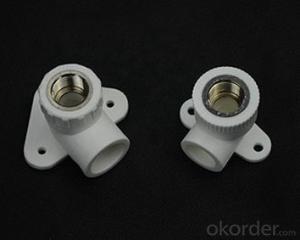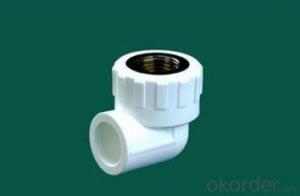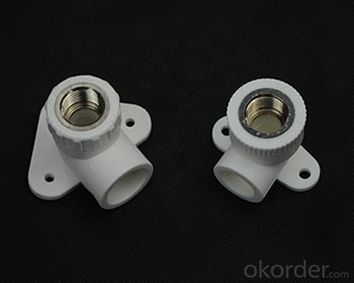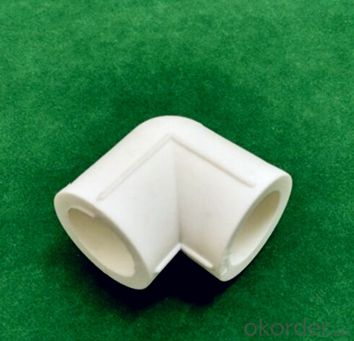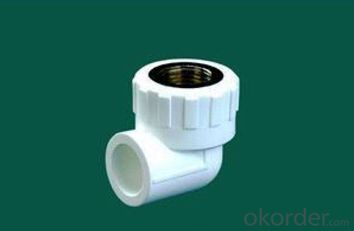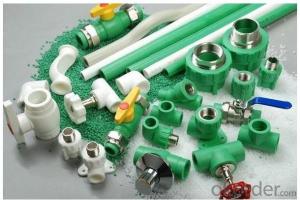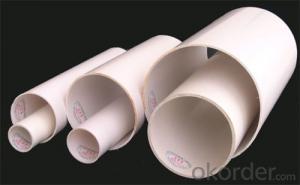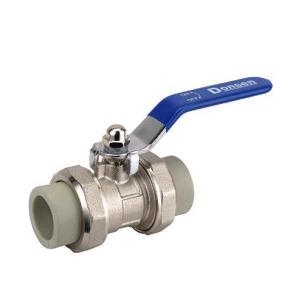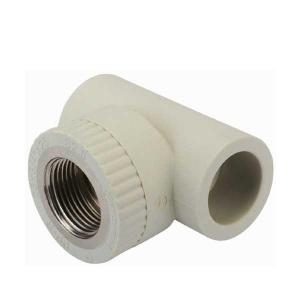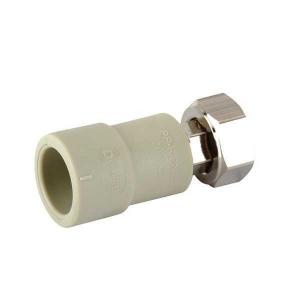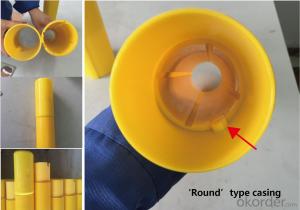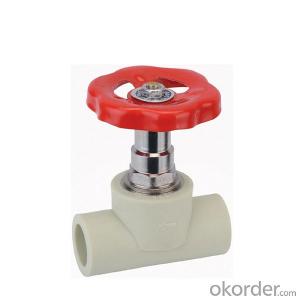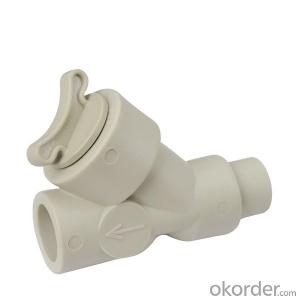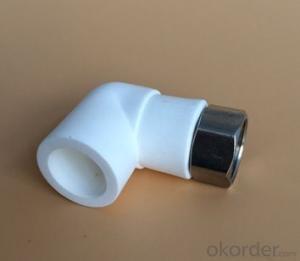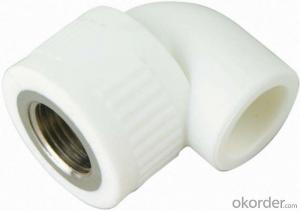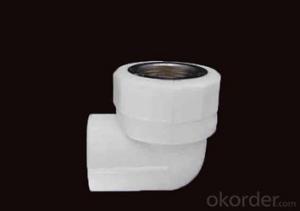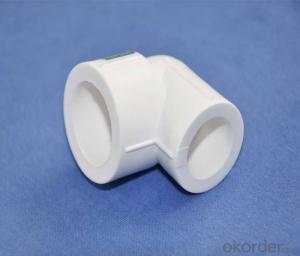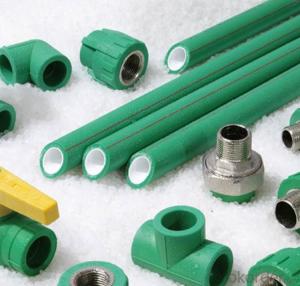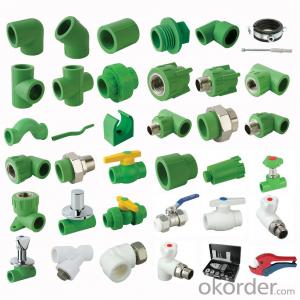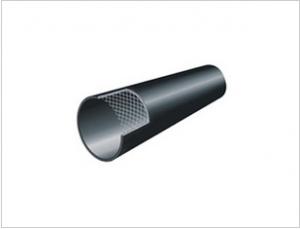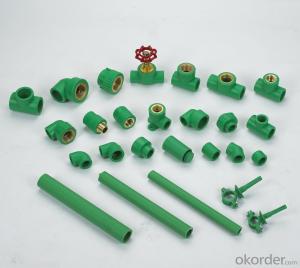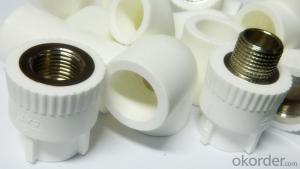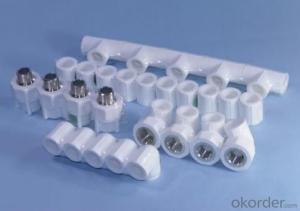Yellow Plastic Gas Pipe Fittings - 2024 PPR Elbows Fittings Used in Industrial Fields
- Loading Port:
- Tianjin
- Payment Terms:
- TT OR LC
- Min Order Qty:
- 1000 pc
- Supply Capability:
- 100000 pc/month
OKorder Service Pledge
OKorder Financial Service
You Might Also Like
Product Overview
PP-R (polypropylene random) tube called type three polypropylene pipe and is also called the PP-R pipe or PPR pipe, with energy saving, environmental protection, high strength, corrosion resistance, with smooth inner wall has the advantages of scale, construction and easy maintenance, long service life, widely used in building water supply and drainage, urban drainage city gas and power cable sheath, and industrial fluid transportation, agricultural irrigation construction, municipal, industrial and agricultural fields. The PP-R pipe is made of random copolymerized polypropylene and is extruded into tubes to be molded into tubes.
Feature
1) The professional factory of fittings.
2) The important manufacture of fittings in china.
3) High quality and better price.
4) Convenient One touch fittings provide instant tubing connections.
5) Elliptical release ring help to connect the tube easily by manual, no special tools required.
Advantages:
1. Greatly reduced linear expansion coefficient, only 1/4 of that of PPR.
2. 100% oxygen tightness, suitable for heating systerm.
3. Improved resistant to impulse under low temperature, resistant to UV-rays.
4. Easily detected by detector when embedded, owing to the metal layer.
Product Description
Pressure | Size(mm) | Pressure | Size(mm) |
PN1.25MPA | 20*2.0 |
PN1.6MPA | 20*2.3 |
25*2.3 | 25*2.8 | ||
32*2.9 | 32*3.6 | ||
40*3.7 | 40*4.5 | ||
50*4.6 | 50*5.6 | ||
63*5.8 | 63*7.1 | ||
75*6.8 | 75*8.4 | ||
90*8.2 | 90*10.1 | ||
110*10.0 | 110*12.3 |
Product Show

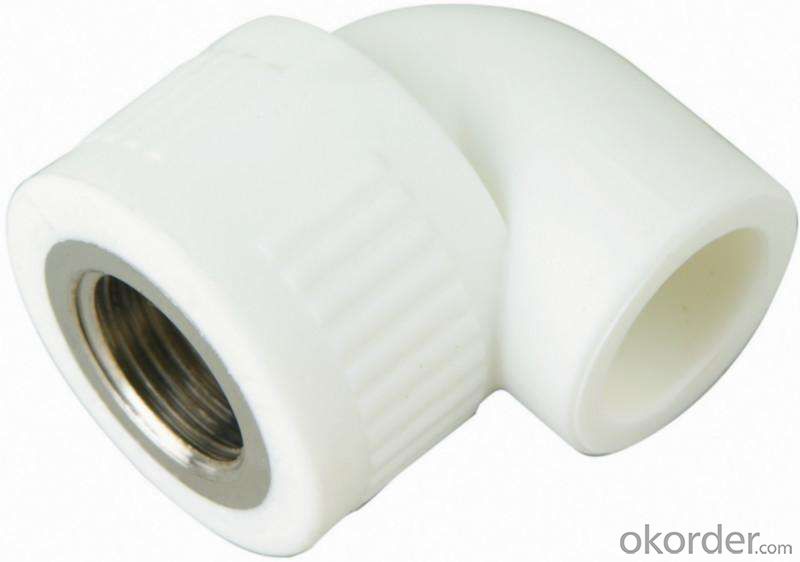
FAQ
Q1: How Can I Get A Sample?
A1: You can get samples by communicate with our export sales.
Q2: How Long Is Delivery?
A2: Delivery time will be30-45days according to order quantity.
Q3: What Is The MOQ?
A3: MOQ depends on different items.
Q4: What Is Our Normal Payments Terms?
A4: Our normal payment terms now is: T/T, L/C or western union, pay
- Q: Are plastic pipe fittings resistant to waterborne bacteria?
- Yes, plastic pipe fittings are generally resistant to waterborne bacteria. They are often made from materials like PVC or CPVC, which have inherent antimicrobial properties that inhibit the growth and transmission of bacteria. Additionally, plastic fittings are typically non-porous and have smooth surfaces, making it more difficult for bacteria to adhere and multiply. However, regular maintenance, proper installation, and adherence to industry standards are necessary to ensure optimal resistance to waterborne bacteria in the long term.
- Q: Are plastic pipe fittings suitable for hot water applications?
- Yes, plastic pipe fittings are suitable for hot water applications. They are commonly made from materials such as PVC, CPVC, or PEX, which have high temperature resistance and can withstand the heat of hot water systems. Additionally, plastic pipe fittings are lightweight, easy to install, corrosion-resistant, and cost-effective, making them a popular choice for hot water plumbing projects.
- Q: Can plastic pipe fittings be used for air conditioning systems?
- Yes, plastic pipe fittings can be used for air conditioning systems. Plastic pipes, such as PVC (Polyvinyl Chloride) or CPVC (Chlorinated Polyvinyl Chloride), are commonly used for air conditioning systems due to their lightweight, corrosion-resistant, and cost-effective properties. Plastic pipe fittings provide a reliable and durable solution for channeling refrigerant, condensate, and air within the air conditioning system. However, it is essential to ensure that the chosen plastic materials and fittings are suitable for the specific requirements and pressures of the air conditioning system to ensure optimal performance and safety.
- Q: Are plastic pipe fittings compatible with solvent-based adhesives?
- Yes, plastic pipe fittings are compatible with solvent-based adhesives.
- Q: Are plastic pipe fittings resistant to extreme weather conditions?
- Yes, plastic pipe fittings are generally resistant to extreme weather conditions. They are designed to withstand a wide range of temperatures and weather conditions, including hot summers and cold winters. Plastic fittings are often made from durable materials that are resistant to UV radiation, moisture, and other environmental factors, ensuring their performance and longevity in various weather conditions.
- Q: What kind of flange gasket does the ABS plastic tube work with?
- Multipurpose; made of the same material as pipes. Elbow (elbow), flange, three pipe and four pipe (crosshead) and reducer (reducer) etc.. Elbow for pipeline corner; flange for the pipe and pipe interconnected parts, connected to the pipe end, three pipe for three pipe collection; four pipe for four tubes together place; for two pipes of different diameters connected to different diameter pipe.
- Q: Are plastic pipe fittings suitable for use in dairy farms?
- Yes, plastic pipe fittings are suitable for use in dairy farms. They offer several advantages such as being lightweight, resistant to corrosion and chemicals, and easy to install. Additionally, plastic fittings are more affordable compared to alternatives like stainless steel. However, it is important to ensure that the plastic used is food-grade and meets industry standards to maintain the quality and safety of the dairy products.
- Q: Are plastic pipe fittings resistant to soil movement and settlement?
- Yes, plastic pipe fittings are generally resistant to soil movement and settlement. They are designed to be flexible and can withstand minor shifts in the soil without breaking or leaking. However, in areas with significant soil movement or settlement, additional measures such as proper installation, support, and reinforcement may be necessary to ensure the stability and longevity of the fittings.
- Q: Are plastic pipe fittings suitable for all types of pipes?
- No, plastic pipe fittings are not suitable for all types of pipes. Different types of pipes, such as copper, PVC, or steel, may require specific fittings designed for their material and connection method. It is important to ensure compatibility and use the appropriate fittings for each pipe type to ensure a secure and leak-free connection.
- Q: How to set the quota for plastic pipe fittings?
- If the valve without quota, quota to perform a similar process can be performed in the similar process quota of plastic pipe section is appropriate, according to the material included in the flange.
Send your message to us
Yellow Plastic Gas Pipe Fittings - 2024 PPR Elbows Fittings Used in Industrial Fields
- Loading Port:
- Tianjin
- Payment Terms:
- TT OR LC
- Min Order Qty:
- 1000 pc
- Supply Capability:
- 100000 pc/month
OKorder Service Pledge
OKorder Financial Service
Similar products
Hot products
Hot Searches
Related keywords
